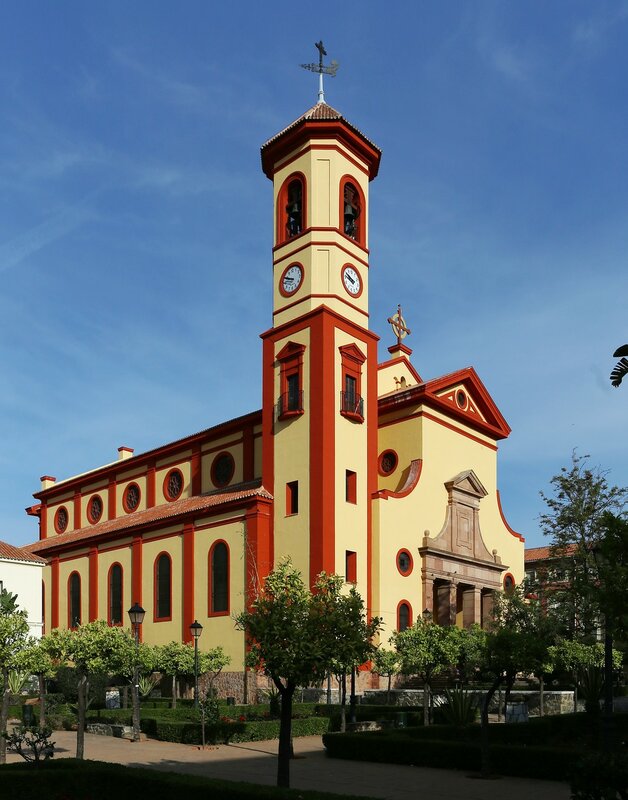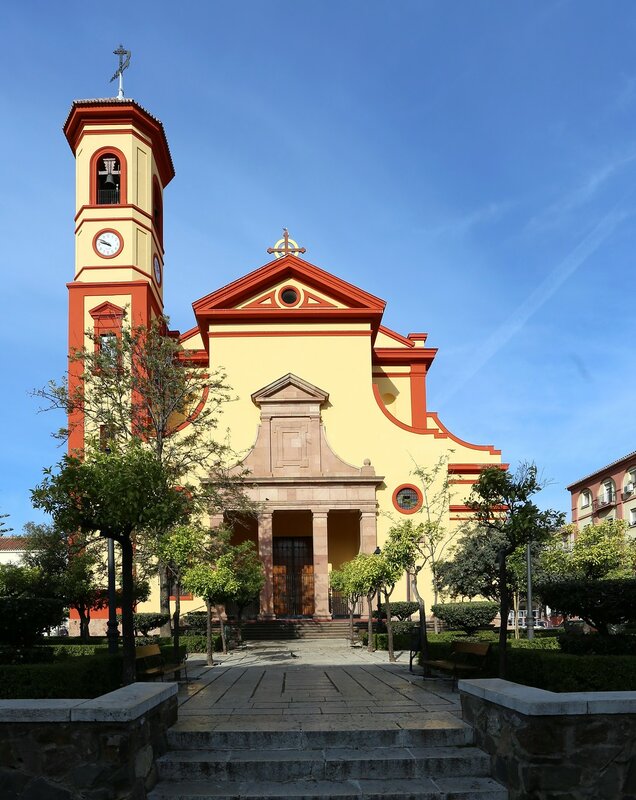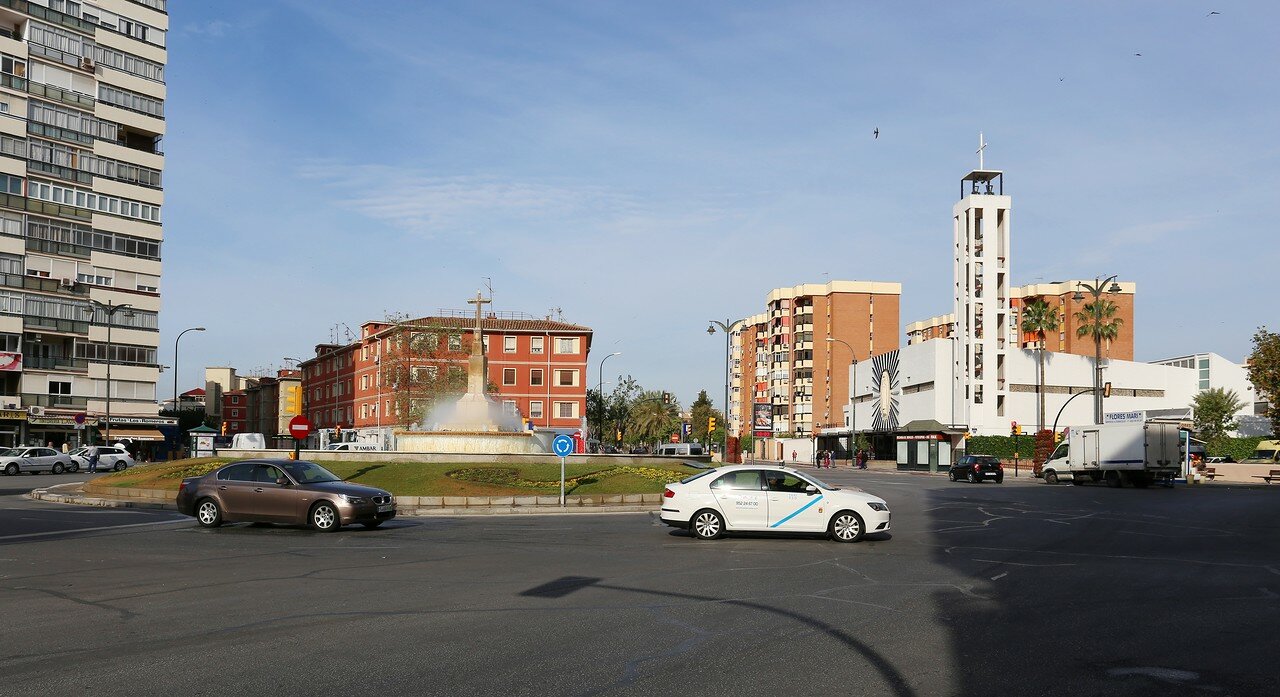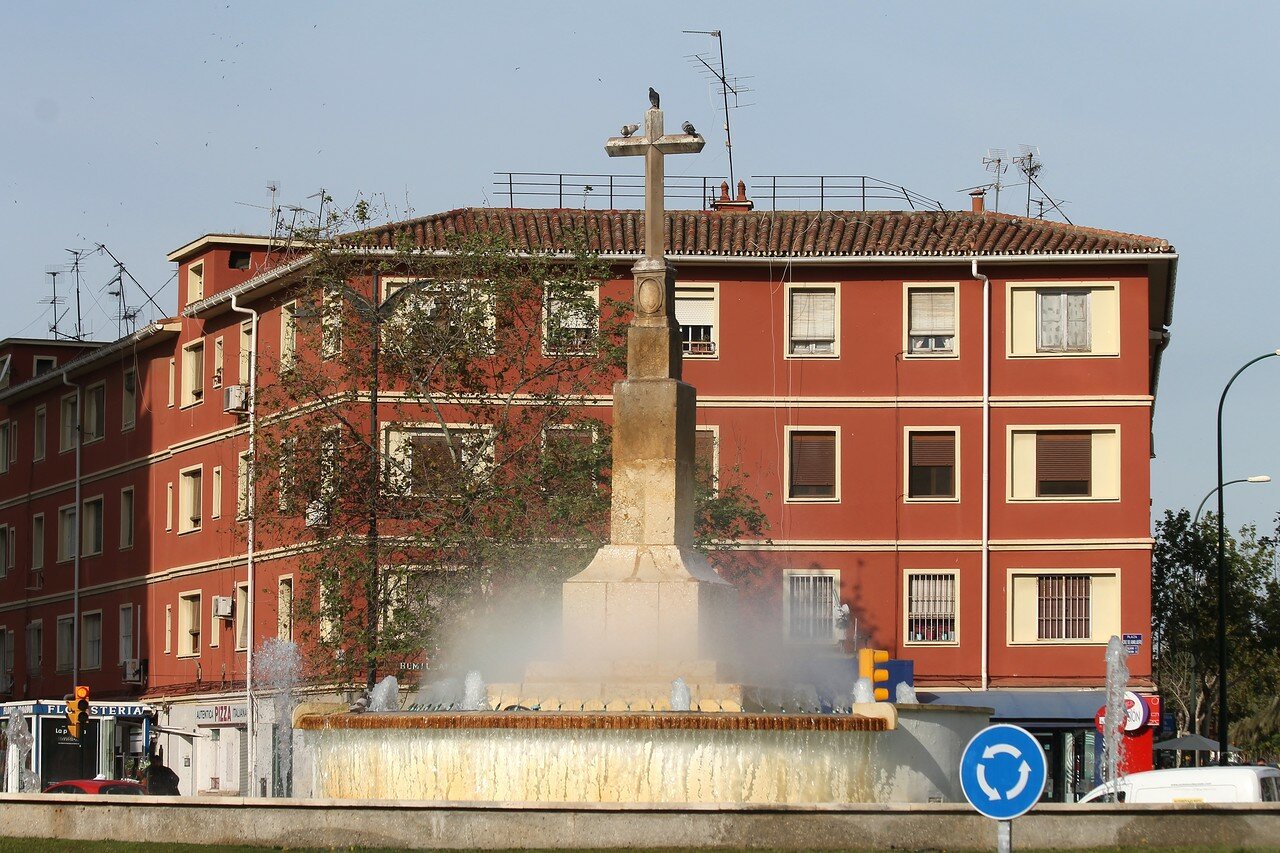Malaga. From Asa Cuevas to Cruz de Humilladero
Today in my schedule was the Museum of motorism, where I decided to walk. The first object, located near the quarter of Asa Cuevas, where I rented a room, surprised me somewhat - this structure with a tower turned out to be a mosque of al-Andalus. And I was surprised because in half a dozen visits to Spain, the mosque is modern construction and clearly used for its intended purpose, I saw it for the first time. There are many ancient mosques, of course, but now they all serve as Catholic churches. Al-Andalus was built on the initiative and at the expense of king Fahd of Saudi Arabia in 2006. The mosque not only performs religious functions, but also serves as a cultural center, where there is a library of Arabic literature, an Assembly hall, and a kindergarten. The complex with a floor area of 40 thousand square meters is one of the largest objects of modern Muslim culture in Europe. The minaret tower is 25 meters high.

On the way, I looked at PIO XII square, where the Church of San Jose Obrero (Parroquia San José Obrero) is located.

The Church was opened in 1953 and has about 11 thousand parishioners.

Then I turned onto Virgen de Estrela and walked past the former olive oil factory.

The territory of the factory is now occupied by the police Commissariat (Comisaría Policía Local).

О производственном прошлом напоминает только винтовой пресс для отжима оливок.

Зелёная улица-бульвар Конде-де-Гуадальорсе. Велодорожка здесь ничуть не уже проезжей части для автомобилей.

Бульвар заканчивается круглой площадью Крус-де-Умильядеро.

Название площади впервые упоминается в начале 17 века и связано с эпидемией, опустошившей окрестности малаги. В этом месте стоял санитарный кордон, ограничивающий вход в город. Происхождение же самого названия "Крест Умильядеро" история до нас не донесла. По одной из версий, здесь стояла часовня с таким названием, а крест - четыре дороги сходящиеся у нее.

Так или иначе, но этот топоним сейчас относится к целому району Малаги, а его центр обозначен фонтаном-крестом.

The square faces the white facade of the Church of the assumption (Parroquia de la Asunción).

The building has a modern urban appearance, and if not for the belfry, it is not immediately recognizable as a religious institution.
